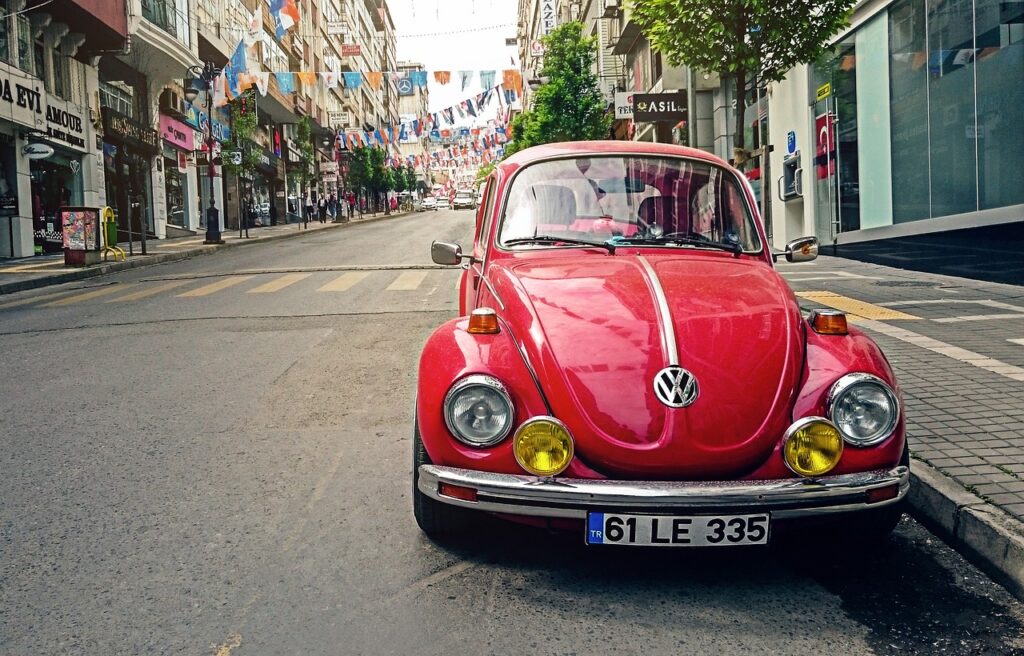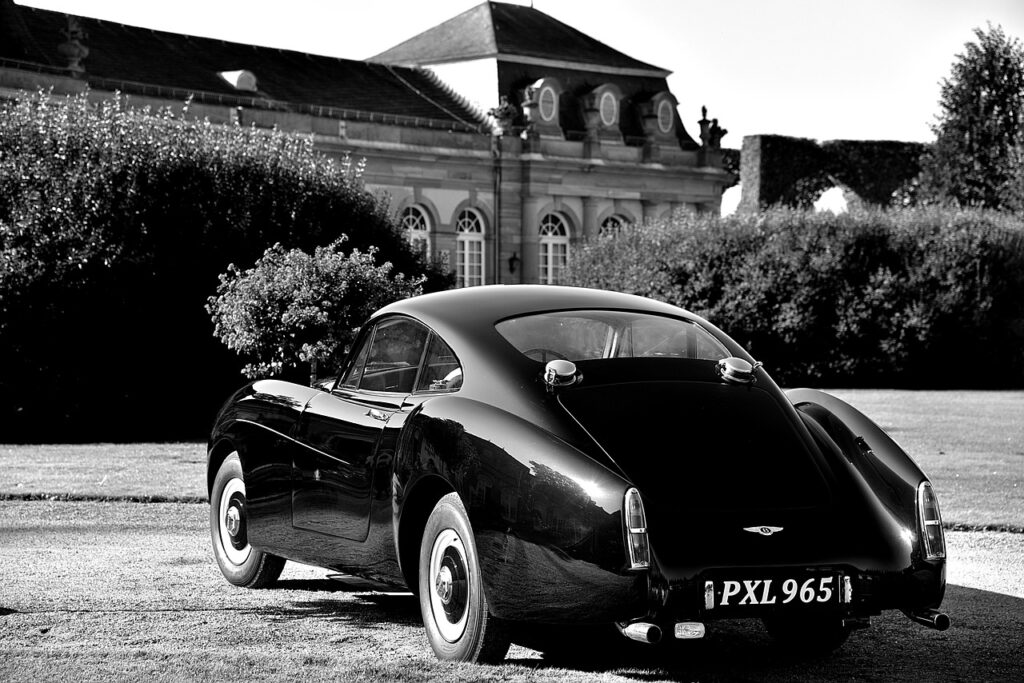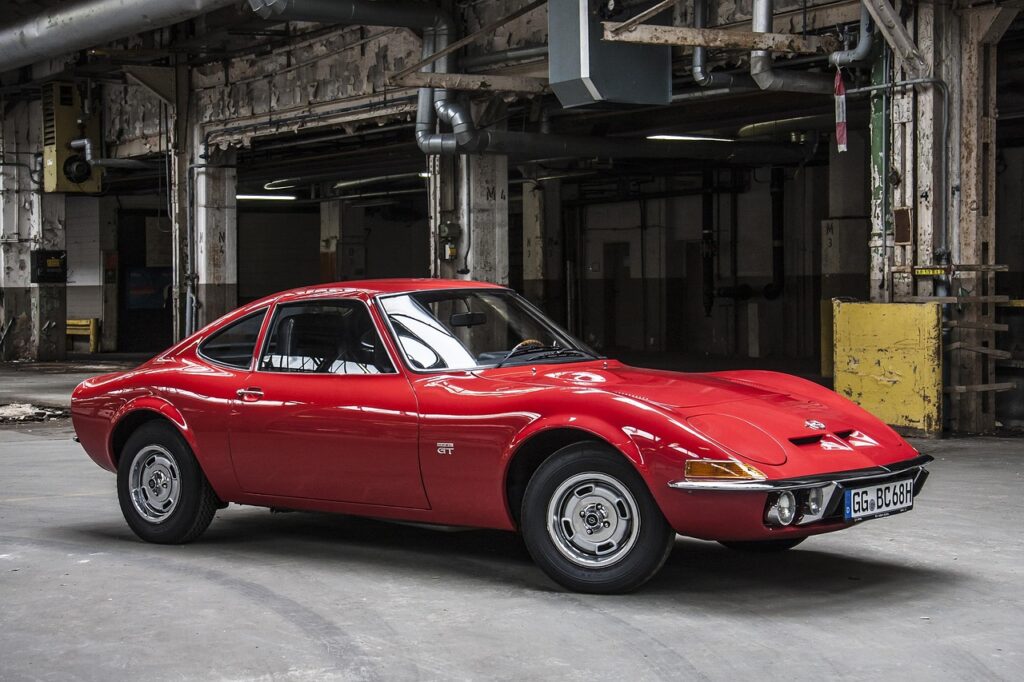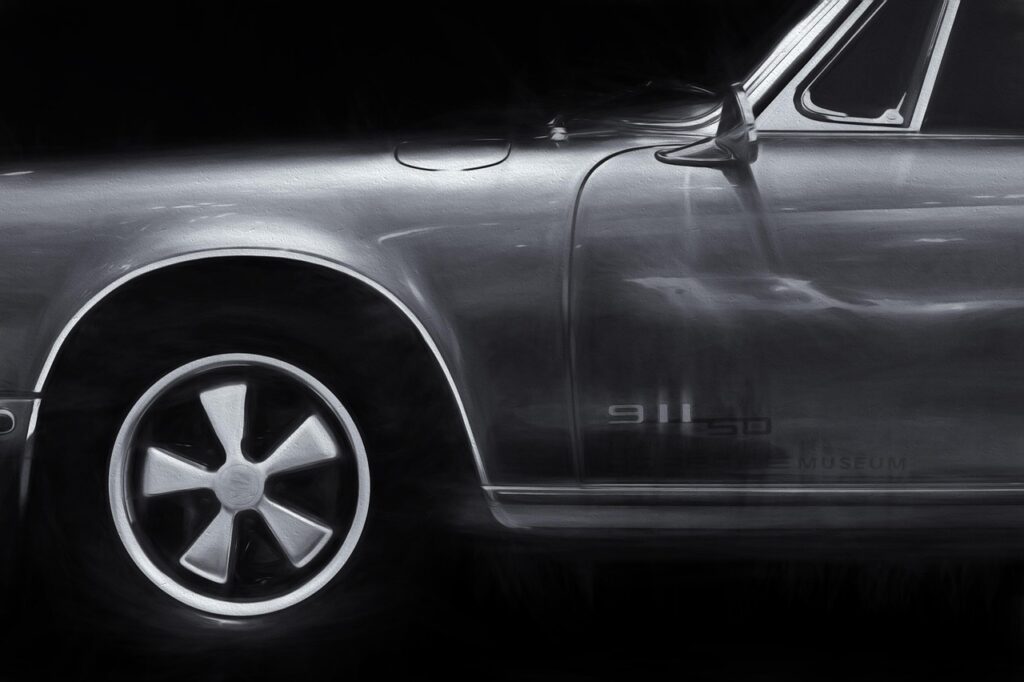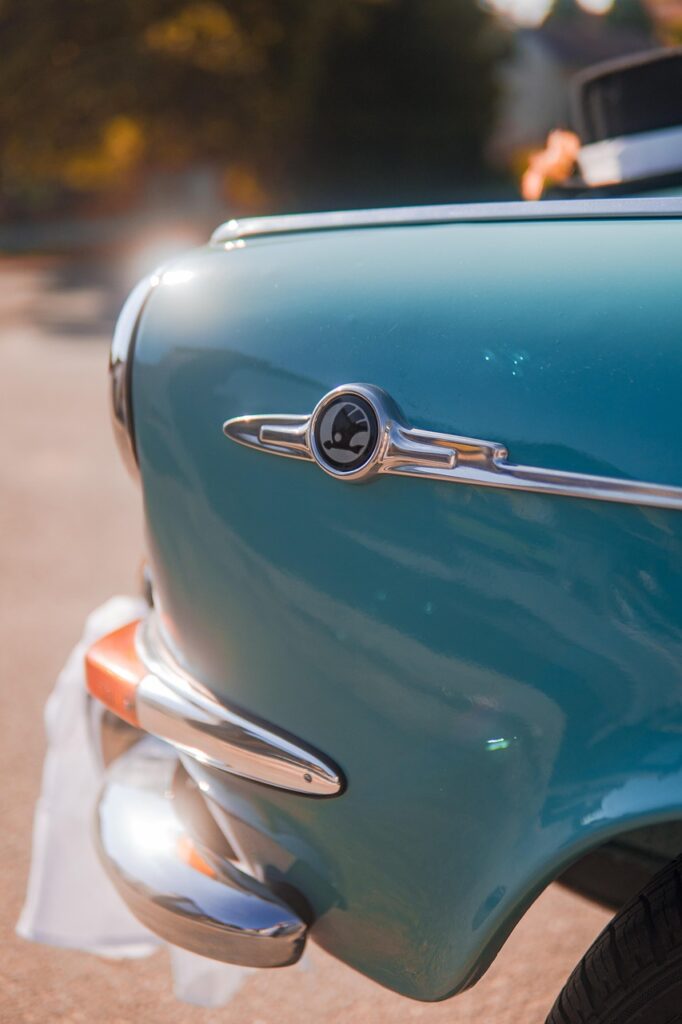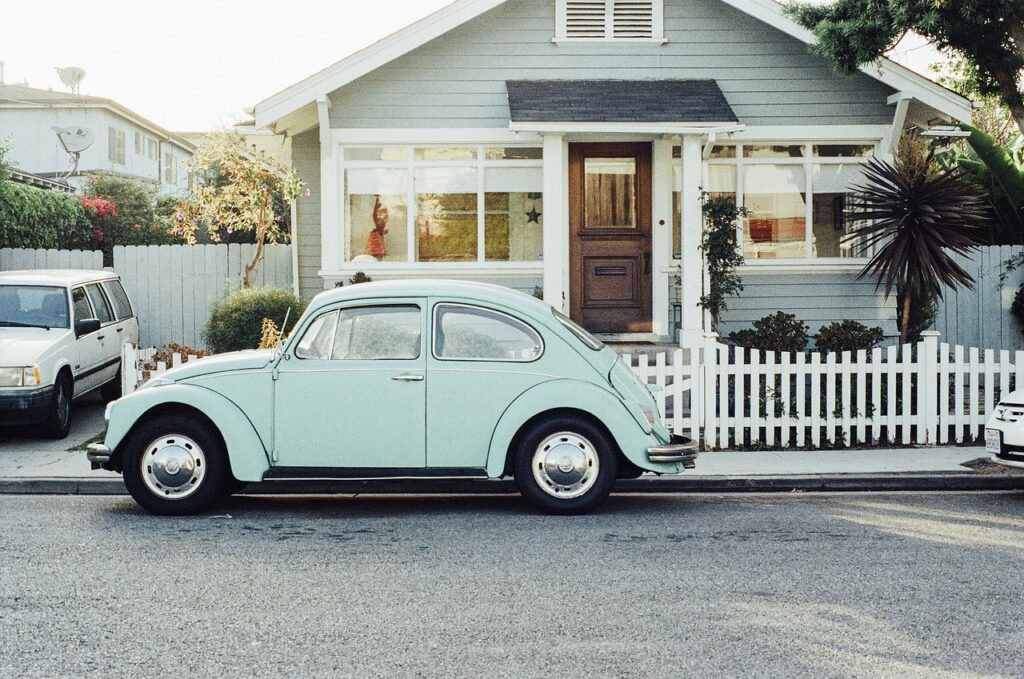The phone call every classic car owner dreads goes something like this: “Sorry mate, we don’t make that anymore. Production stopped in 1987. Try eBay.” Click. This dreaded phrase signals the sudden halt of a restoration project, the cancellation of weekend plans, and a serious hit to the budget, often leaving enthusiasm close to non-existent.
But here’s a crucial truth that every classic car enthusiast needs to embrace: “discontinued” is not a death sentence for your beloved machine. In the intricate world of automotive heritage, it’s merely automotive speak for “you’re going to have to get creative.” It doesn’t mean impossible, extinct, or game over; it means you’re about to join an exclusive underground network of classic car problem-solvers who have transformed the art of finding the unfindable into something akin to a superpower.
Welcome to the challenging yet rewarding discontinued parts game. In this realm, yesterday’s throwaway component becomes today’s holy grail, and knowing the right person often beats having the right wallet every single time. This article will guide you through the perplexing reasons why these critical components vanish from production, illuminate the immediate actions you must take when facing such a crisis, and unveil the sophisticated strategies and networks that keep our cherished classic vehicles roaring on modern roads.
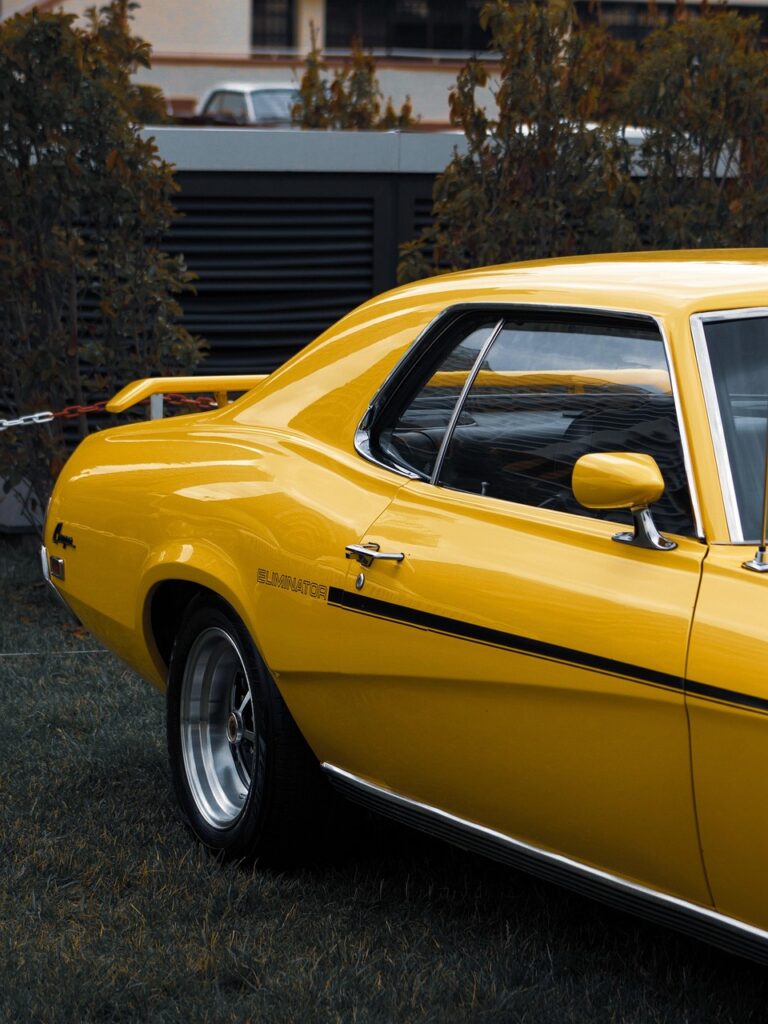
1. **The Accountant’s Revenge: When the Numbers Don’t Add Up**Understanding why a beloved component gets axed is the first step in figuring out where the bodies are buried. It’s not always about corporate greed or conspiracy, although sometimes it certainly feels that way. More often than not, the culprit is pure economics, a cold, hard calculation that simply doesn’t justify continued production.
Consider the scenario of needing a replacement windscreen wiper motor for a 1970s Triumph Dolomite. Sounds simple, doesn’t it? Yet, by the 1990s, perhaps only a dozen people per year worldwide might have needed this specific motor. If the tooling alone costs £50,000 annually to maintain, the maths simply doesn’t work out. Production stops, and owners are left hunting through barn finds and garage clearances, a testament to the brutal logic of manufacturing.
This phenomenon occurs faster than many might imagine. Some components vanish within five years of a model being discontinued, while others linger for decades because they fit multiple applications. The distinguishing factor isn’t how much enthusiasts adore their cars; it’s purely about volume and profitability. Occasionally, parts disappear not because demand dried up, but because the factory burned down, the supplier went bust, or the sole individual with the knowledge to make them retired, taking that invaluable expertise with them—a quintessential tale of British manufacturing heritage.
2. **When the Rule Book Changes: Regulatory Impacts on Production**Regulatory changes are, in fact, responsible for the demise of more classic car parts than market forces alone. What once adorned our vehicles as a design statement or a functional component can quickly become illegal to manufacture or install, rendering existing stock obsolete and future production impossible. The rule book, it seems, has a ruthless way of clearing the shelves.
Remember those gorgeous chrome bumpers that were a defining feature on MGBs? They vanished when safety regulations demanded energy-absorbing designs, effectively outlawing the classic chrome aesthetic. Similarly, those perfectly engineered SU carburettors, once a staple of British motoring, were killed by stringent emissions rules that made their specifications illegal to produce. These shifts don’t just affect individual parts; they ripple through the entire supply chain, forcing radical redesigns or outright discontinuation.
Environmental regulations further exacerbate this carnage. That lovely chrome trim on a classic Jaguar, for example, might require a plating process that now demands permits costing more than most small suppliers’ annual turnover. The result? Discontinuation, not because demand disappeared, but because compliance became an insurmountable financial burden. Furthermore, abrupt shifts like asbestos bans eliminated entire lines of brake linings overnight, and lead-free petrol requirements necessitated changes in valve seat specifications. Each regulatory shift leaves an irreversible trail of discontinued components that, despite working perfectly, could no longer be legally made.
3. **Technology’s Body Count: Progress Making Components Obsolete**Progress, while beneficial for modern vehicles, often leaves a trail of orphans in the classic car world. New technologies sweep through the industry, rendering previous generations of components utterly obsolete, often with astonishing speed. This technological march transforms warehouses full of perfectly good parts into scrap metal, a stark reminder of innovation’s relentless pace.
Electronic ignition, for instance, made points and condensers obsolete so rapidly that vast inventories became worthless almost overnight. Fuel injection systems effectively eliminated the need for carburettors, a cornerstone of classic engine design. Similarly, advanced ABS systems stepped in to replace mechanical brake boosters, pushing yet another category of intricate, well-understood components into the annals of history.
Beyond the physical components, the expertise required to maintain and understand these older systems also begins to disappear. Finding someone who truly understands Stromberg carburettor tuning becomes increasingly difficult each year. Mechanics capable of rebuilding dynamos are retiring faster than apprentices can learn these specialized skills. When the foundational knowledge goes, the support infrastructure for these components inevitably follows, making them harder to source and even harder to maintain correctly.

4. **Document Everything: The Hidden Clues of a Broken Part**When the dreaded news of a discontinued component hits, your immediate response in the crucial first few hours often dictates whether your classic will be back on the road next week or languishing for years. The absolute first step, a non-negotiable imperative, is to drop everything and meticulously document what you’ve got in your hands, particularly the broken component itself. This seemingly simple act holds a treasure trove of clues that can disappear if you carelessly discard it or bury it in a forgotten box.
Part numbers, for example, are notorious for hiding in the most ridiculous and obscure places—inside electrical units, beneath layers of paint, or stamped into areas you’d never normally think to look. These aren’t just arbitrary figures; they are the key identifiers that can unlock a world of potential replacements. Therefore, don’t just photograph the obvious markings; get comprehensive shots of mounting points, connection types, and any wear patterns that might help identify the exact variant. Even a seemingly identical 1965 Lucas alternator can differ from a 1968 version simply by a few millimeters in mounting ear spacing, and these minute details can make or break your hunt for a replacement.
Furthermore, immediately check your car’s existing documentation. Old service records, previous parts invoices, and even handwritten notes from former owners often contain the vital part numbers for components that no longer display readable markings. That dusty box of receipts from the previous owner, often dismissed as mere clutter, might just contain the golden nugget of information that solves your entire problem, saving you countless hours of frustrating searching.
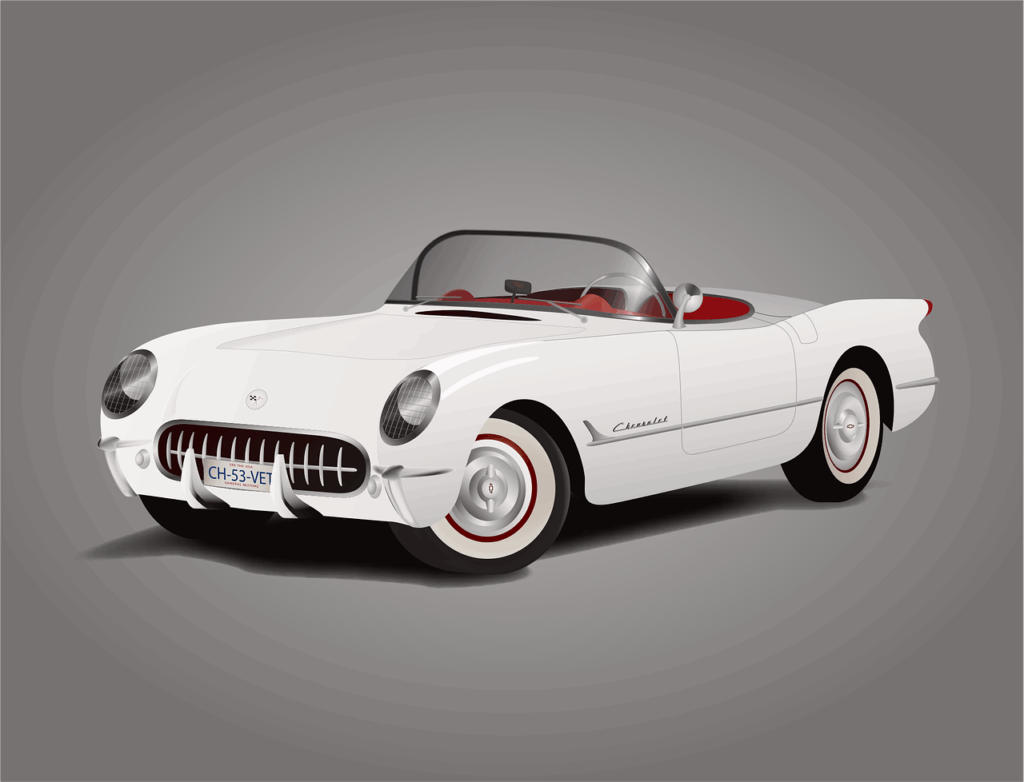
5. **Work Your Networks: The Power of Community and Specialists**Once you’ve thoroughly documented the elusive component, the next critical move is to leverage the immense power of your classic car community and specialist contacts. It’s imperative to ring your club contacts before the workshops close for the day, tapping into a collective knowledge base that has likely solved every conceivable parts crisis multiple times over. More importantly, these trusted individuals will offer honest advice, telling you upfront whether a cheap reproduction alternative is actually viable or if it’s destined to create more problems than it solves.
Beyond club members, immediately pick up the phone to specialist suppliers, even if their websites don’t list your specific part. Many of these established businesses maintain what’s known as “ghost inventory”—components that are tucked away in storage but simply not catalogued online. That elusive Lucas dynamo, for instance, might be patiently gathering dust in their warehouse, waiting for the right enthusiast to ask the right question and bring it back into the light. A direct conversation can often unearth hidden gems that online searches will never reveal.
And in this modern age, do not underestimate the sheer power of social media panic posts. Those dedicated Facebook groups for your specific classic model or marque frequently produce results faster than more formal channels. Post clear, well-lit photos of your component, explicitly stating part numbers if you have them, and then watch as the collective knowledge and widespread connections of hundreds of fellow enthusiasts work tirelessly in your favor, often pointing you directly to a solution or a vital lead.
6. **Reality Check: Understanding the True Problem and Alternatives**Before you commit to spending serious money on a rare, often exorbitantly priced replacement for a discontinued component, it’s absolutely crucial to perform a thorough reality check. This means understanding precisely what has failed in your system. Sometimes, the expensive discontinued component isn’t the root cause of the problem at all. For example, that failed brake servo might actually be suffering from contaminated brake fluid, a condition that will just as quickly destroy any brand-new replacement you install.
Take the time to research thoroughly whether viable reproductions actually exist before dedicating months to hunting for an original part. The reproduction market for classic car components is a constantly evolving landscape; what was completely unavailable last year might very well be in production this year, thanks to new initiatives or increased demand. A few hours spent checking current availability and reputable manufacturers can save you untold frustration and wasted effort in the long run.
Finally, seriously consider whether modern alternatives could solve your problem more effectively and reliably than a period-correct component. The classic car world is increasingly embracing smart upgrades. For instance, modern electronic ignition systems can often be discreetly fitted inside original distributors, forever eliminating the maintenance headaches associated with points. Sometimes, embracing a well-chosen technological progress is a far superior solution to a stubborn pursuit of absolute originality, particularly when it enhances safety, reliability, and the sheer enjoyment of driving your classic.
7. **The Breaker Network: Specialist Salvage for Classics**Britain’s classic car scene operates almost like a parallel economy, where discontinued components circulate through an intricate network that outsiders rarely discover. Learning how this specialized system works can bring fast and often crucial dividends to your restoration project. At the forefront of this network are the specialist breakers, who represent the first and often most vital line of defense against the daunting challenge of discontinued parts.
These are not your general scrap yards that unceremoniously crush anything older than last week’s model. Specialist breakers understand the unique needs of classic car owners and handle components with the care and knowledge they deserve. Their operations are fundamentally different from what you might expect; the best among them maintain sophisticated, computerized inventories that are updated in real-time. They know precisely which classic cars arrived this week and exactly what components are available, from a complete engine to a rare trim piece.
Crucially, these breakers understand component condition grading and price parts based on actual rarity and usability, rather than mere hopeful guessing. Furthermore, there’s often regional specialization within this network. West Country operations, for example, might stock a larger inventory of British sports cars, while Midlands breakers often specialize in family saloons and commercial vehicles. Northern yards, benefitting from less exposure to road salt, sometimes maintain excellent stocks of imported classics. The true secret to success here is to build relationships with these specialists *before* you desperately need parts. Regular visits, friendly chats with the staff, and occasional smaller purchases can ensure that when something truly special arrives, you’ll be among the first to receive that all-important phone call, giving you a vital head start.
8. **Remanufacturing: Better Than New?**Continuing our exploration into keeping classic engines running, modern remanufacturing specialists offer an advanced solution: rebuilding components to standards often superior to their original factory specifications. This process leverages contemporary materials and techniques to not only restore functionality but also address inherent design weaknesses of the original parts. It’s a strategic approach that breathes new life into components that would otherwise be lost to time.
Consider the notorious temperamental Smiths fuel gauges, which historically delivered inconsistent readings due to magnetic degradation and mechanical wear. Remanufacturing specialists now integrate modern electronics into these original housings, achieving an accuracy level that 1960s technology simply couldn’t touch. This subtle upgrade preserves the period-correct appearance while drastically improving reliability and driver confidence, making daily use far more enjoyable.
Brake components, in particular, gain immense benefits from modern remanufacturing processes. Original servo units, for example, often suffered from predictably degrading rubber seals. Modern alternatives, however, are engineered with materials that resist issues like ethanol fuel contamination and extreme temperature fluctuations—challenges that original designs never had to contend with. These rebuilt units frequently come with warranties that outstrip the original car’s coverage, a testament to their enhanced durability.
The key to successful remanufacturing lies in identifying specialists who deeply understand your specific requirements and the nuances of your classic vehicle. Some rebuilders prioritize pure functionality, while others meticulously maintain a period-correct appearance even as they upgrade internal components. Ensuring their approach aligns perfectly with your project’s goals, whether it’s absolute originality or enhanced performance, is paramount for a satisfactory outcome.

9. **Custom Manufacturing: If It Doesn’t Exist, Create It**When every other avenue has been exhausted, and a vital component simply cannot be sourced, the ultimate advanced strategy for parts acquisition is custom manufacturing. This innovative approach combines modern fabrication techniques like CNC machining and 3D printing with traditional craftsmanship to recreate parts that vanished decades ago, turning seemingly impossible problems into tangible solutions for classic car owners.
Exemplifying this tailored approach are the intricate wood frame sections for a Morris Minor Traveller. The original ash wood frames demanded specific grain orientations and joining techniques that standard timber suppliers no longer comprehend. Specialist woodworkers, armed with both traditional methods and modern preservatives, can now meticulously craft these sections, ensuring they resist rot more effectively than the original 1950s production.
Metal fabrication offers similar bespoke possibilities for a wide range of components. Complex exhaust systems, precise body panels, and even critical engine parts can be recreated with exacting accuracy using contemporary techniques. The critical element here is locating specialists who possess a dual understanding: both of the original specifications and tolerances and of the capabilities and limitations of modern manufacturing equipment.
Furthermore, the rapid evolution of 3D scanning and printing technology is increasingly supporting custom manufacturing endeavors. Broken plastic dashboard components, for instance, can be digitally scanned, redesigned to eliminate inherent weaknesses, and then printed using materials that are often superior in durability to the original specifications. This technology is becoming so accessible that dedicated enthusiasts are even tackling simpler reproductions themselves, bridging the gap between historical accuracy and modern resilience.
Read more about: Pebble Beach: The Tiny Enclave Where Every Drive is a Vintage Dream (And Why This Phenomenon Thrives Across America)

10. **The Price of Scarcity: Understanding Discontinued Parts Pricing**When navigating the landscape of discontinued components, it’s essential to recognize that their pricing operates under a distinctly different logic compared to currently produced parts. Scarcity itself dictates a premium, reflecting the genuine unavailability of an item rather than conventional market positioning. However, this unique environment also unfortunately attracts opportunistic sellers who may inflate prices far beyond reasonable levels, making careful discernment crucial.
To effectively navigate this often-volatile market, classic car owners must conduct thorough research into recent sale prices. Consulting eBay’s sold listings, engaging in discussions on classic car forums, and cross-referencing with specialist supplier price guides can provide invaluable reality checks against overly ambitious asking prices. This due diligence helps distinguish between legitimate rarity value and mere speculation, ensuring you make informed purchasing decisions.
In scenarios where an original discontinued part commands an exorbitant price or is simply unobtainable, budget reproductions sometimes represent the only realistic option for keeping a classic vehicle operational. Unlike markets for current production components, where a spectrum of premium alternatives typically exists, the discontinued parts arena often presents a stark choice between a basic reproduction and a custom-made, significantly more expensive solution. This makes understanding when a budget alternative truly makes sense a vital part of strategic sourcing.
These budget alternatives prove particularly effective for hidden components where visual appearance is less critical than fundamental functionality. Parts like engine mounts, various brackets, and internal mechanical elements often perform acceptably, regardless of their manufacturing origin, provided they meet essential strength and fitment requirements. Prioritizing performance over aesthetics in these cases can save significant resources without compromising the vehicle’s core integrity.
Read more about: Navigating the Scarcity: 8 Essential Ways to Unearth Parts for Your Beloved American Classics
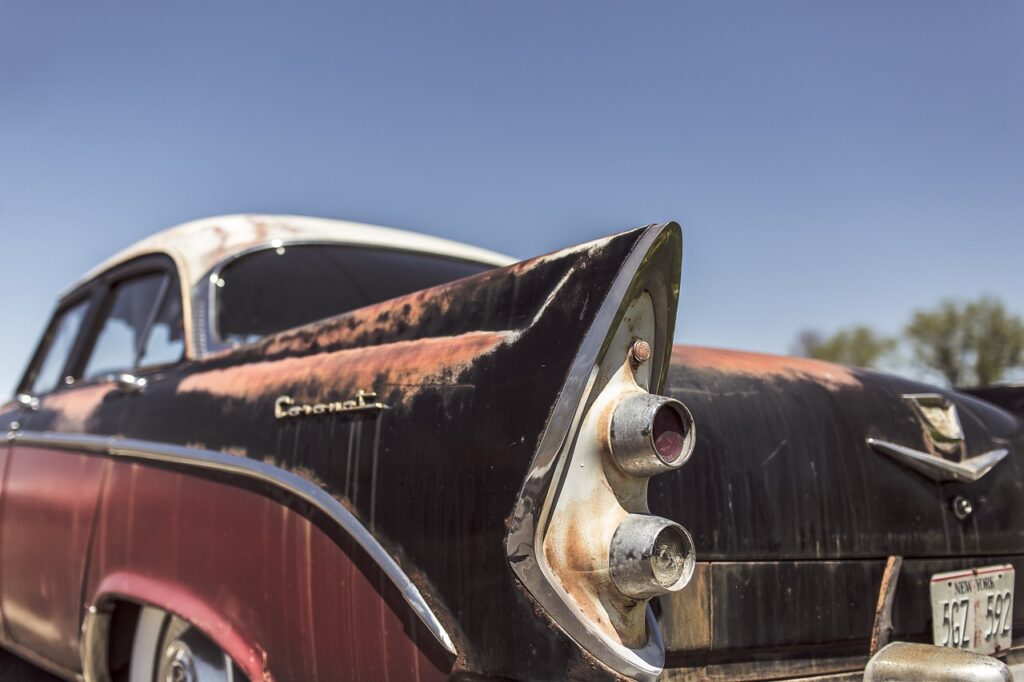
11. **Strategic Spending: Investment or Expense?**Beyond simply understanding price tags, a truly astute classic car owner views component acquisition through a strategic lens, distinguishing between a necessary expense and a valuable investment. Certain discontinued parts genuinely protect or enhance a vehicle’s long-term value. Original instrumentation for high-value classics, for example, might command substantial sums, but their preservation of authenticity can significantly impact resale values, making that ‘expensive’ Smiths chronometric tachometer a sound investment in a concours-level restoration.
Crucially, safety components warrant premium investment, irrespective of a vehicle’s perceived monetary value. Elements such as brake systems, steering linkages, and suspension parts should never be compromised for cost savings. The catastrophic consequences of a failure in these areas far outweigh any financial savings gleaned from opting for budget alternatives. This principle is especially vital with discontinued parts, where reliable, high-quality reproduction options may be scarce or non-existent.
Visible components play an outsized role in a classic car’s perceived quality and overall presentation. Dashboard instruments, exterior chrome trim, and interior fittings contribute far more to the vehicle’s aesthetic appeal than their individual cost might suggest. Opting for budget alternatives in these highly visible applications often results in obviously incorrect aesthetics to knowledgeable observers, negatively impacting both the owner’s enjoyment and the car’s market value.
Furthermore, classic car owners can learn to ‘time the market’ like seasoned investors. Discontinued parts pricing often fluctuates based on predictable supply and demand cycles. Major classic car shows can create spikes in demand for specific components, while end-of-season autojumbles frequently offer remarkable bargains as stallholders aim to clear inventory. Monitoring specialist suppliers for clearance sales or product line changes can also yield genuine bargains on quality components that may become unavailable again, provided ongoing support is verified.
12. **Proactive Preservation: Avoiding the Parts Apocalypse**Smart classic car ownership involves a shift from reactive problem-solving to proactive strategic planning regarding parts availability. Adopting preventative measures significantly reduces the need for emergency solutions, keeps restoration projects advancing smoothly, and mitigates unexpected stress and expenses. It’s about staying ahead of the curve rather than constantly chasing it, anticipating potential issues before they become critical dilemmas.
Developing an ‘early warning intelligence’ system is a cornerstone of this proactive approach. Regularly following industry publications that track supplier changes and parts availability trends is invaluable. Classic car magazines frequently report discontinuation announcements months in advance, providing owners with a critical window to stock up on vital components before scarcity inevitably drives prices skyward. This foresight can be a project-saver.
Monitoring specialist suppliers’ communications for advanced notice of production changes also proves highly beneficial. Many reputable suppliers offer customer newsletters or regularly update their websites with announcements regarding upcoming discontinuations or modifications to their product lines. This direct intelligence empowers owners to make strategic purchases well before components become genuinely scarce, securing essential parts while they are still readily available.
Consider joining manufacturer heritage programs early, rather than waiting until a specific part is desperately needed. These programs sometimes offer exclusive advance purchase opportunities or access to limited production runs that are not accessible through general retail channels. Such memberships can provide a critical advantage, securing hard-to-find components and connecting enthusiasts with resources dedicated to preserving their specific marque’s legacy.
13. **ifndautoparts: Your Digital Parts Hunter**The traditional approach to hunting for discontinued classic car parts often involves an exhaustive and frustrating cycle of endless phone calls, relentless website searches, and the slim hope that the right component appears on eBay before another enthusiast snatches it up. However, platforms like ifndautoparts are fundamentally transforming this arduous process, bringing a much-needed level of modern efficiency to the classic car community’s most persistent challenge.
At the core of this innovation are ‘Match Me Alerts,’ which act as your personal, tireless parts hunter. Instead of dedicating countless hours to manually checking dozens of suppliers each week for components that might appear unpredictably, these alerts continuously monitor the entire platform. You simply set up notifications for that elusive brake servo, an impossible-to-find instrument cluster, or a specific carburetor variant, and then focus on other aspects of your restoration project while the technology diligently handles the hunting, notifying you immediately when a match is found.
Beyond merely facilitating individual searches, ifndautoparts leverages collective demand data in a powerful way. When multiple users search for the same discontinued components, the platform aggregates this information, providing concrete evidence of market need directly to manufacturers. This data-driven approach has already proven instrumental in facilitating the return of several “permanently discontinued” parts to production. Your specific search request might just be the crucial factor that tips the scales, sparking a manufacturer to bring a vital component back to life.
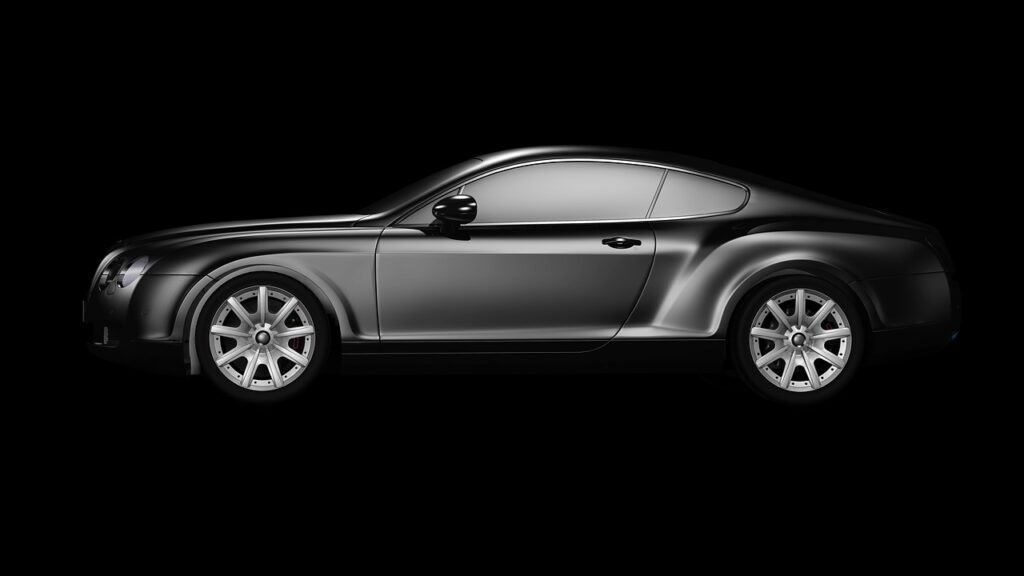
14. **The Balance: Authenticity vs. Modern Reliability**One of the most profound dilemmas in comprehensive classic engine restoration involves finding the perfect balance between preserving a classic engine’s inherent originality and significantly enhancing its performance and reliability for modern roads. Restorers often strive to maintain the distinctive style and authentic feel of the original engine while subtly incorporating discreet updates that, at first glance, remain entirely unnoticed. This careful equilibrium ensures the vehicle retains its nostalgic vibe without sacrificing contemporary expectations for driveability and safety.
Achieving this delicate balance frequently involves using a combination of period-correct parts alongside selectively chosen modern upgrades. This hybrid approach respects the vehicle’s historical tradition while simultaneously addressing common weaknesses or limitations of older technology. For instance, an engine might retain its original block and head, but benefit from upgraded electronic ignition, a more efficient cooling system, or fuel injection discreetly housed to appear stock, boosting performance and reducing maintenance.
Effective research into historical models and close consultation with experts who possess extensive experience in classic car restoration are crucial steps in this process. These resources provide invaluable insights into appropriate modifications that align with the vehicle’s heritage. Understanding what specific upgrades were available or could be seamlessly integrated during the car’s original production era, or how new technologies can complement existing designs, guides restoration decisions towards the best possible outcome.
Ultimately, matching the aesthetic of the era with the benefits of current technology often yields the most satisfying results. This approach demonstrates a deep respect for the vehicle’s heritage while ensuring that the classic engine can be reliably enjoyed on modern roads. It’s about bringing the core of these historic machines into the present, allowing them to continue their legacy for generations to come.
Your journey through the challenging but immensely rewarding world of discontinued classic car parts culminates here, but the adventure for your beloved machine doesn’t have to end. The challenge of finding that elusive component isn’t disappearing; if anything, it’s accelerating as our cherished classics continue to age and mainstream manufacturer support diminishes. Yet, as we’ve explored, the UK’s specialist network continues to evolve and improve, bolstered by innovative platforms like ifndautoparts, which make previously hidden resources and expertise accessible to every enthusiast. Your discontinued parts problem has a solution. It might demand creativity, patience, or the cultivation of connections you haven’t yet made, but the answer undeniably exists somewhere within the vibrant, interconnected network of specialists, fellow enthusiasts, and dedicated problem-solvers who collectively ensure that classic cars continue to roar, purr, and elegantly cruise on modern roads. Bringing a classic car engine back to life is more than a mechanical task; it’s a testament to passion and a bridge between automotive eras.


